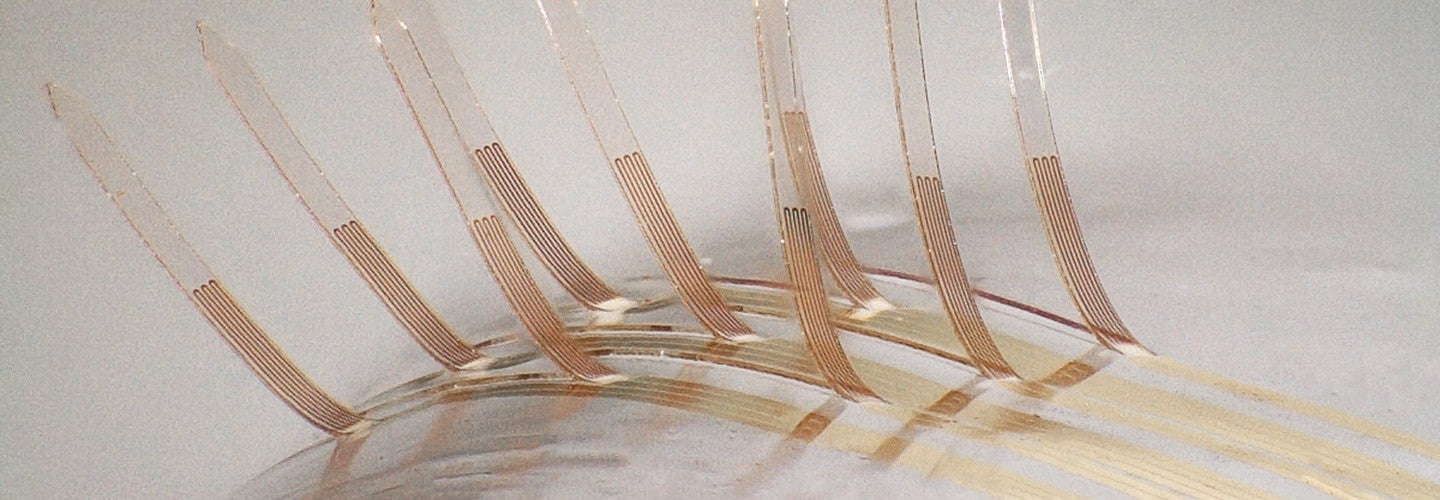
Neural Engineering
Research Focus | Neural Engineering
The central focus of the group is the development of novel implantable interfaces to the brain and peripheral nervous system to advance fundamental science and improve human lives through therapeutic neuromodulation.
Major problems we are trying to solve:
- Develop microfabrication methods for brain and nerve interfaces. Existing implantable systems suffer from poor integration with the central and peripheral nervous system. Through the development of high resolution microfabrication methods we seek to provide interfaces that record and stimulate neural circuits with high precision and with a high degree of longevity.
- Develop new interfaces and therapies involving engineered biomaterials that promote regeneration of tissue damaged during device implant or damaged as a result of disease.
- Develop algorithms for effective use of long-term implants. These machine learning algorithms interpret signals from the central and peripheral nervous system and control closed loop therapeutic stimulation.
Participating Research Groups
- Microfabrication methods for brain and nerve interfaces (Gardner, Taylor, Dalton, Aleman, Deku).
- Sensory-motor learning and neural signal processing (Gardner, Murray, Mazzucato, Smear).
- Calcium imaging methods development (Niell, Gardner, McCormick, Smear).
- Biomaterials and genetic constructs for CNS repair and bioactive implants (Dalton, Gardner, Ambati, Hettiaratchi, Deku).
Bioengineering Program Faculty — Neural Engineering
EXPLORE THE BIOENGINEERING RESEARCH GROUPS
UO Collaborators
Benjamín Alemán
Department of Physics
Visit the Alemán Lab
Brian Dalton
Department of Physiology
Visit the Dalton Lab
Luca Mazzucato
Department of Mathematics
Visit the Mazzucato Lab
David McCormick
Department of Biology
Visit the McCormick Lab
James Murray
Department of Mathematics
Visit the Murray Lab
Cris Niell
Department of Biology
Visit the Niell Lab
Matt Smear
Department of Psychology
Visit the Smear Lab
Richard Taylor
Department of Physics
Visit the Taylor Lab
